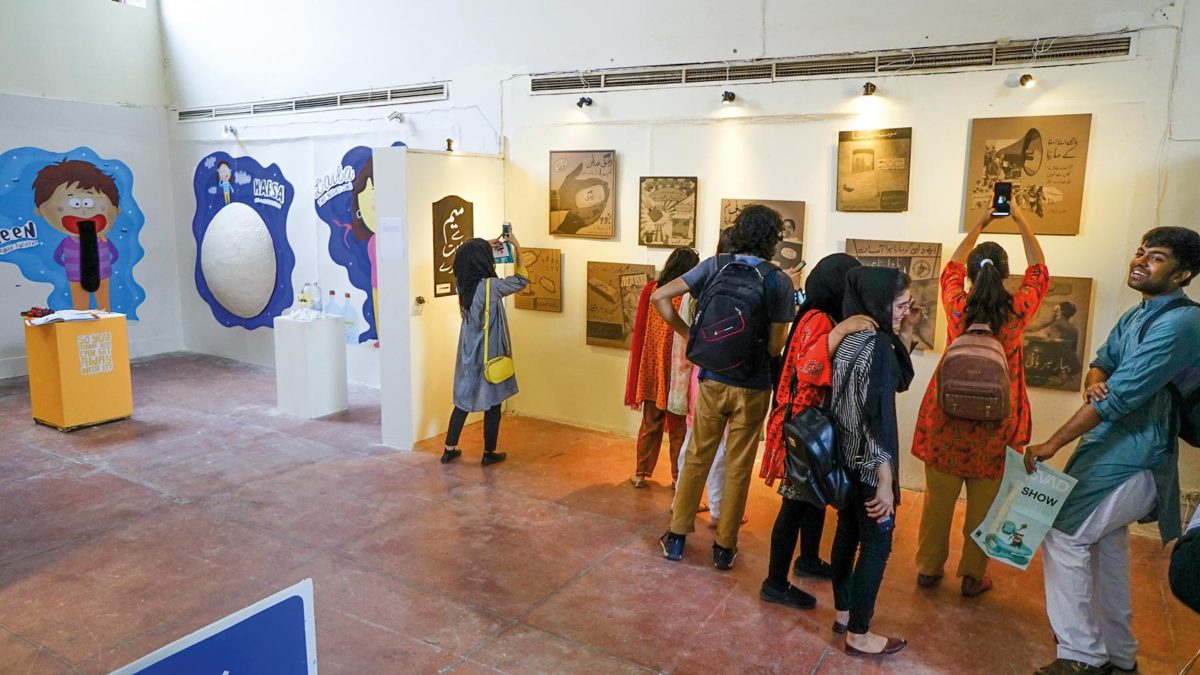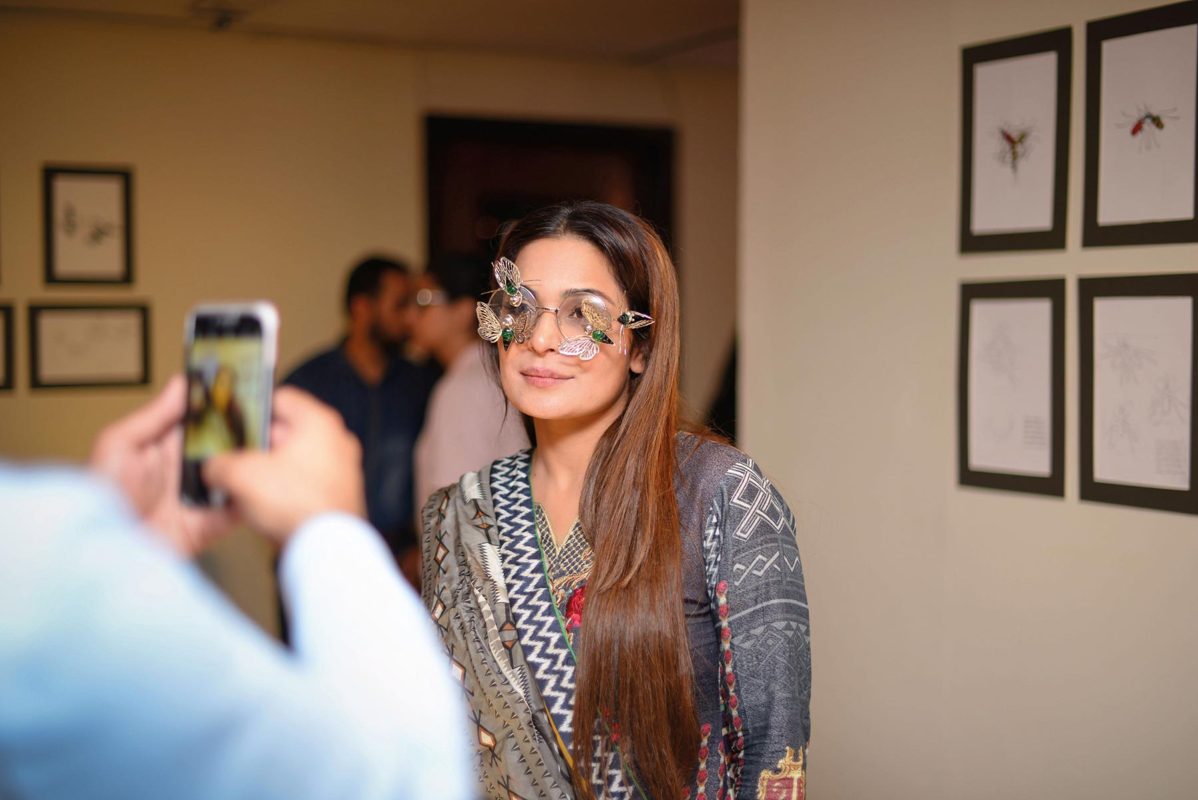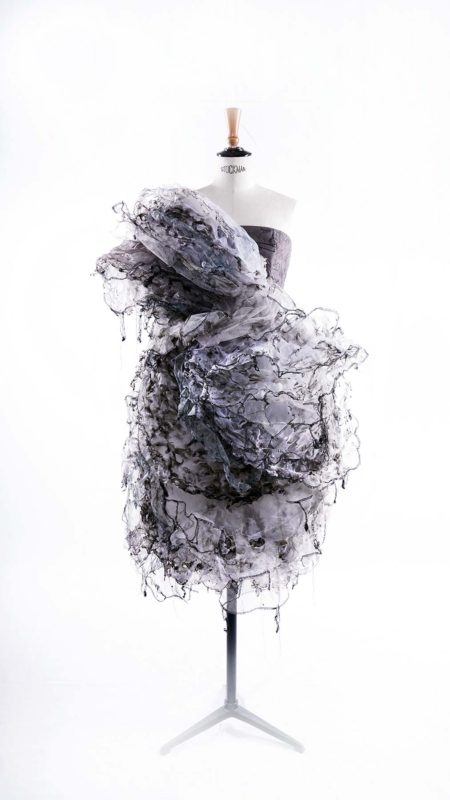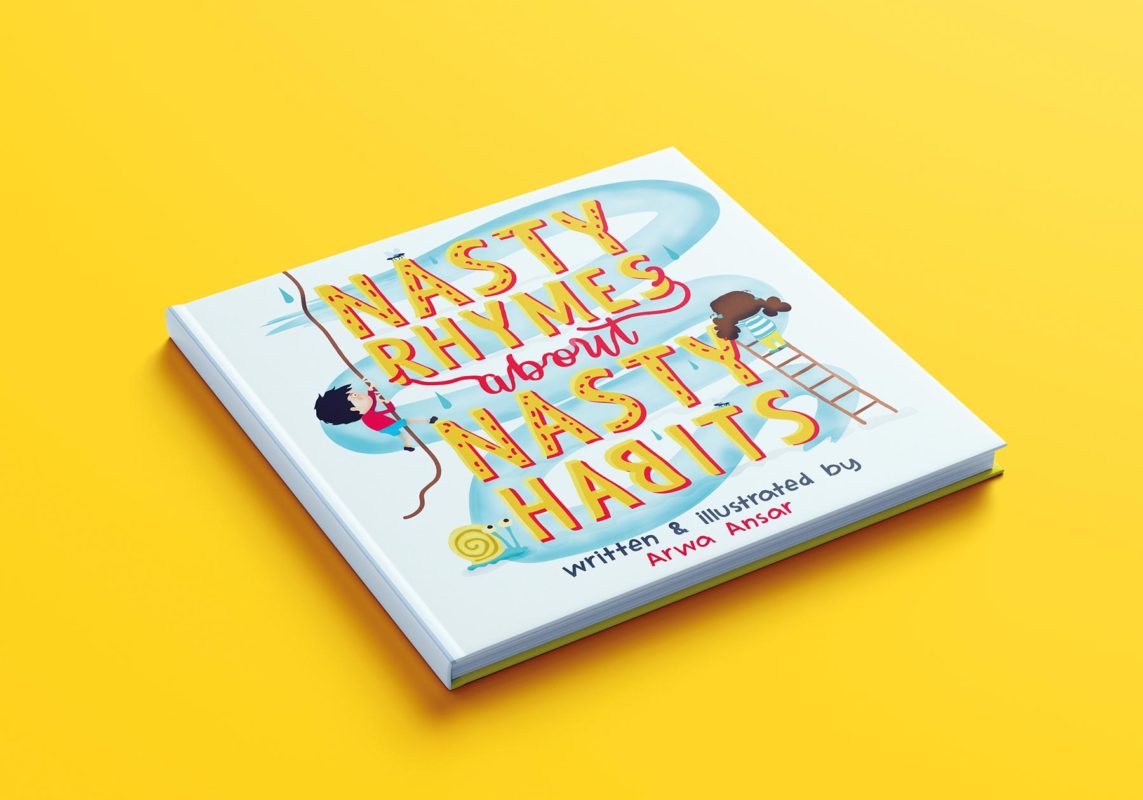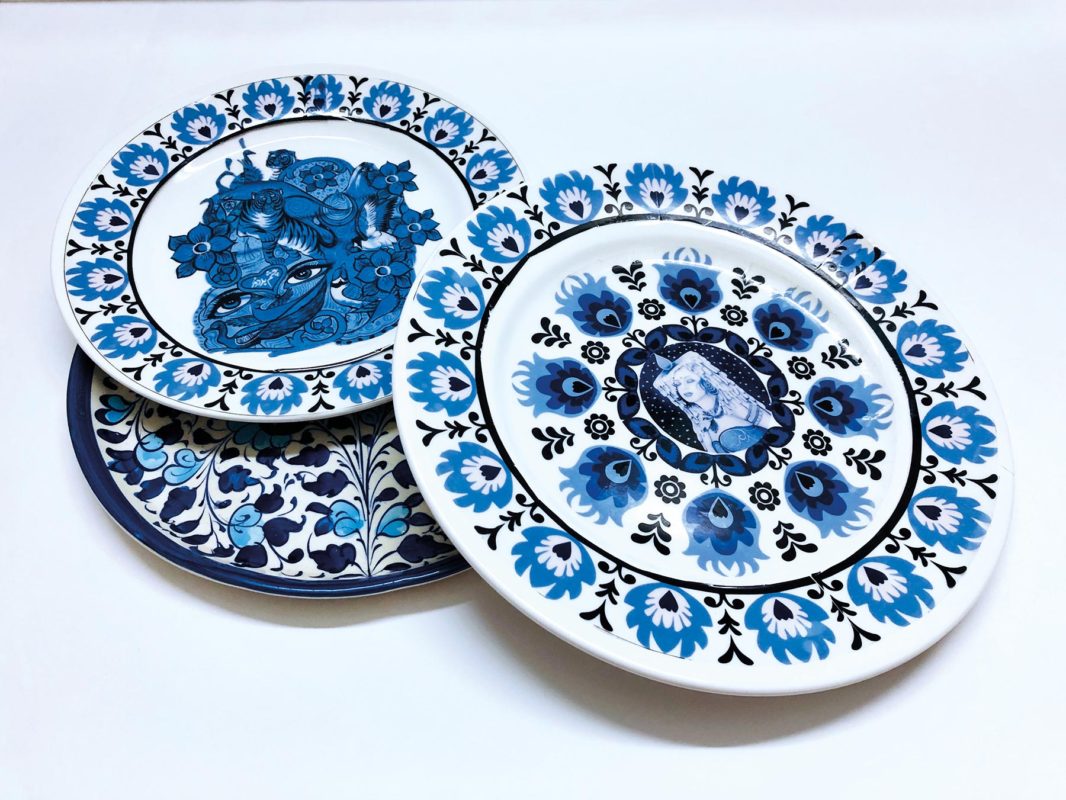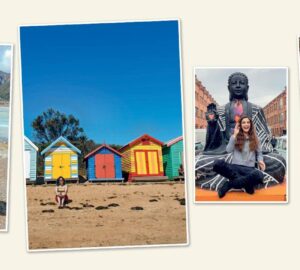With all guns blazing, the Beaconhouse National University, School of Visual Arts and Design, BNU-SVADW (Dean, Rashid Rana) presented their annual trio – a week that flamboyantly shaped its educational vision. The consecutive events were the Degree Show 2019 with more than 60 thesis projects in Visual Arts, Communication Design, Textile, Fashion and Jewellery Design, The Design Summit 2020 – Prologue 2 with panel discussions from Design Academia and Industry, and the NothingFest 2019 with talks by professionals from a range of disciplines (other than art and design).
Degree Show 2019
The undergraduate thesis show furthers the challenge to identify new grounds for making and sharing. The art school’s hallmark is its promising commitment to multi-disciplinary studio practices and an alternative pedagogy that cuts through national and cultural boundaries. With strong leadership and a spirited exchange of ideas within its departments, it debates the history of ideas within the changing global contexts of learning.
High definition projections, poetic installations, judicious displays and strategic interventions within studio and outside (formal gallery space) offer an immersive experience. The graduating students experiment with a range of tools and mediums to track their artistic and aesthetic concerns; light, sound, paint, mixed media, music, metal, interactive web design, mobile aps, augmented and virtual life, artificial intelligence software, projection mapping, household objects, foliage and raw organic earth material.
The diversity of expression at SVAD owes to the regional and international student body as well. Coming from various cities of Pakistan and from countries across South Asia, students undergo their unique paths of inquiry to bring together a transnational perspective to their work.
Students at the Deportment of Visual Arts (Risham Syed and Basir Mahmood as thesis advisors) question predetermined boundaries of studio practice, deconstruct societal norms and notions of identity, and play with ideas of materiality and interpretation. Visual Communication Design students (thesis advisors Omair Faizullah, Zainab Barlas and Ebaa Khurram) develop data-driven visual analogy. They build alternate realities, stretching their imaginations into a world where the history of Muslim empire offers another trajectory. They imagine their country’s history of colonization entering into the Chinese era, speculate the traps and inevitability of virtual life, propose games based on local myths, critique surveillance and technology, and create music instruments that fuse the classical and the contemporary. This new generation of designers bears a deeper understanding of the world around them. Instead of proposing solutions, they pose introspective questions and offer responses through illustration, animation, interaction, and print. Works at the Program of Jewellery and Accessory Design (thesis advisors, Ayesha Ahmad and Sana Aziz) probe conversations between movement and interaction, person and object, and the maker and wearer. Students from the Program of Fashion and Fiber Studies (thesis advisors, Pakeezah Ziadi, Ammar Shahid) present their personal and fictional synopses of sociocultural encounters with the city. Work from the Program of Textile and Fiber Studies (thesis advisors, Kiran Shah and Sana Khan) predominantly reflects on personal turmoil and anxiety, subsequently becoming a healing mechanism for many.
The young artists and designers, with an inclusive, self-assured language and a democratic approach to creative practice, have set the bar high for their contemporaries as well as for their own future projects.
NothingFest 2019
The third edition of NothingFest (Rohma Khan’s brainchild) was held from Apr 22-26, 2019. According to Rashid Rana, Dean BNU-SVAD, NothingFest 2019 is an ongoing effort to expand pedagogy outside the classroom, and seek alternate means of knowledge sharing that augment prescribed curricula.
The sub-theme for this year is ‘Blank’. Continuing the tradition of bringing people outside of art and design academia, this year too (under the Directorship of Rohma Khan and Aroosa Rana) the festival invites highly esteemed and learned scholars to school campus.
The talks commence with Syed Fakir Aijazuddin, followed by psychiatrist Ali Hashmi, celebrated actors Samina Peerzada and Meera, the exuberant adventurer Moin Khan and the veteran lawyer, Salman Raja. The speakers interpret the idea of ‘Blank’ through poetry, audience interaction and personal stories. Common discussion hooks are Generation Blank, a Blank Mind, Blank Out, Drawing a Blank and a Blank State. Interactive talkshops are later conducted for students by leading professionals of their fields; Ali Azmat, Poor Rich boys, Talha Ali, Ayesha Nasir and many more.
The Design Summit 2020 – Prologue 2
With Rashid Rana as the Founder, Ijlal Muzaffar as the Creative Director and Omair Faizullah as the Lead, the Design Summit (DS) Prologues invite designers from all over Pakistan each year for a collective reflection on the contexts that shape their professional and academic practice. Last year, over 50 academics and specialists convened under one roof at the inaugural DS – Prologue 1 to generate a discourse in Design that aimed to transcend mainstream professional and academic practice and one that confronted “binary framings of modern versus traditional, art/ design versus craft, global versus local”.
This year, Design Summit 2020 – Prologue 2, looks at pedagogy beyond academia and challenges the omnipotence of design within university and institutional patronage. One of the challenges for this pioneering initiative is inclusivity and balanced representation from different design fields and the multiple tiers that exist within them. However, very open to partnerships with other educational institutions and design centers, the Prologues lead up to the first Design Summit – 2020, with the intention to strengthen the community and expand its meaning, domain and prerogative.Design Summit 2020, and the forums that lead to it, also attempt to identify existing and emerging design scholarship and propose questions about design criteria and possibilities; what it is and what can it be.



